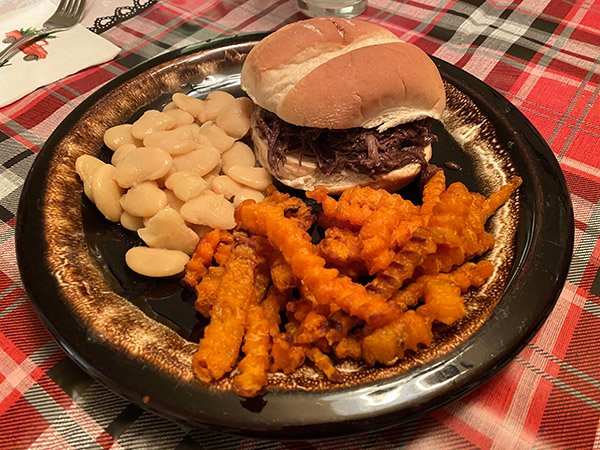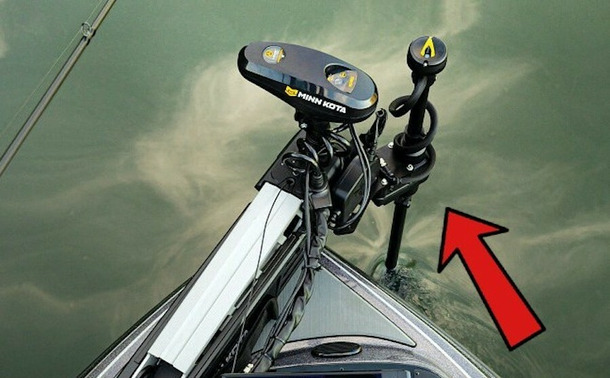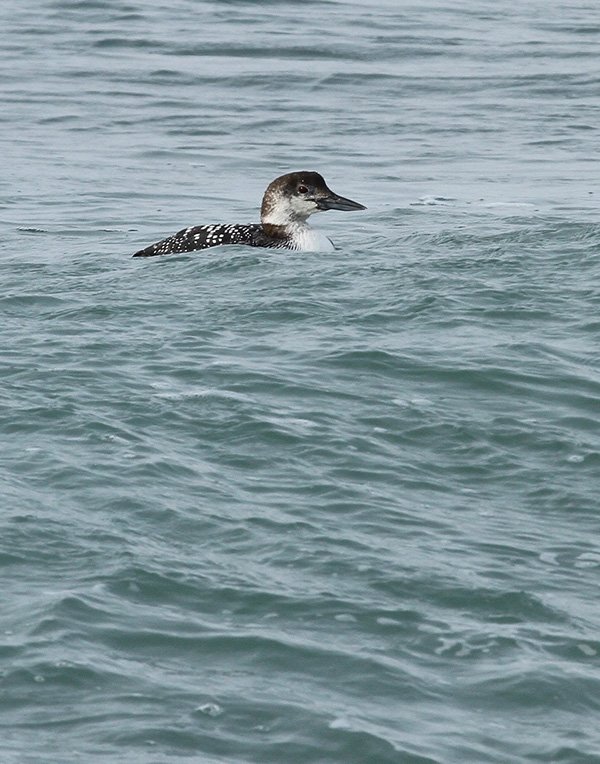Wisconsin Republicans Float
Bill To Designate State Rifle

By Todd Richmond
MADISON, Wis. (AP) — Republican lawmakers began circulating a bill Thursday that would designate a lever-action rifle produced in northwestern Wisconsin as the state’s official rifle.
The bill from state Reps. Dave Armstrong, Treig Pronschinske and James Edming and Sen. Romaine Quinn would designate the Henry All-Weather .45-70 as Wisconsin’s official state rifle.
The bill is symbolic only. The state rifle designation would not force anyone to purchase or use the weapon. But it would give the rifle and its manufacturer, Rice Lake-based Henry Repeating Arms, plenty of publicity and help the bill’s authors score points with gun supporters.
Armstrong is from Rice Lake; Quinn is from Cameron, about seven miles (12 kilometers) south of Rice Lake. Edming’s district includes Ladysmith, home to a Henry Repeating Arms factory.
The company’s Big Boy All-Weather Rifle won the Wisconsin Manufacturers and Commerce “Coolest Thing Made in Wisconsin” contest in 2019. Wisconsin Manufacturers and Commerce is the state’s largest business association and a staunch Republican ally.
“The nice part about this bill is that it simply honors a longstanding tradition that many Wisconsinites enjoy,”he said. “Something that pays homage to many generations of hunters is in no way political and should not be framed as such.”Armstrong declined to comment. Quinn and Edming didn’t immediately return messages. At least nine other states, including Alaska, Arizona and Texas, have designated official state firearms, according to the National Rifle Association. North Dakota lawmakers on Wednesday rejected a proposal to make the Winchester Model 1876 rifle that state’s official firearm. One of the Legislature’s handful of American Indian members, Democrat Jayme Davis, complained that the rifle was used to wipe out buffalo in the 1800s, robbing indigenous people of a key resource.
State Sen. Chris Larson, a Milwaukee Democrat, scoffed at the bill. His city has been grappling with a sharp uptick in homicides since the COVID-19 pandemic began and guns have been the weapon of choice. According to a Milwaukee Journal Sentinel database, about 200 people have been killed in the city in each of the last three years. Ninety percent of the victims last year and in 2021 were shot; 79% of the victims in 2020 were shot. “Are you kidding me?” Larson said of the bill. “Why? Why? You know, there are mounting problems in our communities that people are facing. It seems silly that we’re trying to go down a path of trying to designate things that are just bumper-sticker signals to a base.”
Heidi Johnson, a spokesperson for the Wisconsin Anti-Violence Effort, said that in light of Wisconsin’s “devastating levels” of gun violence, naming a state gun should be the least of lawmakers’ concerns.
Choosing the Henry All-Weather .45-70 as the official gun highlights the Legislature’s lack of interest in keeping people safe given that the company recalled certain .45-70 lever actions earlier this month, Johnson added the company posted the recall on its website on March 10 for Henry All-Weather .45-70s produced between late December and early January, saying the weapons can go off without anyone pulling the trigger due to firing pins that may not meet specifications.
The company warned all users of Henry lever action .45-70s to stop using them until they determined whether they were manufactured during the recall window.
No one immediately responded to an email The Associated Press left in the company’s general inbox after hours Thursday. A message left with the company’s answering service wasn’t immediately returned.
The GOP legislators are seeking co-sponsors to sign on by March 24. Aides to Assembly Speaker Robin Vos and Senate Majority Leader Devin LeMahieu didn’t immediately respond to emails inquiring about the bill’s prospects Britt Cudaback, a spokesperson for Democratic Gov. Tony Evers, also didn’t immediately respond to an email asking if the governor would support the measure, but it appears unlikely that Evers would sign the bill into law if it gets to him. The governor called a special legislative session in 2019 to pass bills creating universal background checks on gun purchasers and to allow judges to disarm people deemed to be a threat. Republicans gaveled in and gaveled out within seconds without taking any action on the measures. Last year, Evers vetoed a set of GOP bills that would have expanded concealed carry rights.
Associated Press writer Harm Venhuizen contributed to this report. Venhuizen is a corps member for the Associated Press/Report for America Statehouse News Initiative. Report for America is a nonprofit national service program that places journalists in local newsrooms to report on undercovered issues.
Pulled Goose Barbecue

By Tyler Frantz
Like most readers, I’m not a master chef — just a guy who loves to hunt, fish, and eat what he harvests. If success afield and family schedule allows, this series will highlight a new wild game or fish dish each month. I’ll cover all the details from take to table, and everyone will benefit with a collection of easy, everyday meals harvested from nature’s pantry and celebrated in the home kitchen.
The take
The text came through just after 6 p.m. — “T-pain u want to goose hunt with us tomorrow?”
Roughly 12 hours later, seven camo-clad waterfowlers and I hustled to brush in two A-frame hunting blinds with fresh field grass, while our host Mike put the finishing touches on the decoy spread sprawling across a cut cornfield.
With little time to spare before shooting light, we piled in like a can of sardines, headlamps were extinguished, and deer season stories were swapped with a cool drizzle spraying our backsides. Soon daylight came, and then 9:30, and finally the birds flew.
Despite most of the flocks having their GPS coordinates locked on an adjacent property’s large pond just over the hill, our convincing spread and Mike’s talented calling managed to coax enough gullible travelers into shooting range for a handful of skyward volleys.
By 11:30, I was hoofing it across the field to my truck with a large migrator bloodying up the side of my pants leg – another meal secured, compliments of Mother Nature, good friends, and fair shooting.
The prep
Waterfowl tends to get a bad rap for being strong flavored, so it’s important to give these birds a little extra TLC. For this goose, I carved out the chunky breasts, and after rinsing away bloodshot and feathers, submerged the meat in a bowl of saltwater. This went into the fridge to help draw out the blood. A fresh change of water on two subsequent days helped finish the job until ready to cook or freeze.
After three days of soaking, I rinsed the breasts and patted them dry with paper towels before shaving away all remaining fat. In a frying pan, a quarter stick of melted butter and minced garlic began to liven up the kitchen. The goose breasts were browned in the simmering goodness for a few minutes on each side, thrown into a crock pot and covered with chicken broth, in which they slow cooked on high for six hours.
When cooked to full tenderness, the meat was shredded, and all juices were discarded. A favorite barbecue sauce and splash of hot sauce were mixed in, and the pulled goose barbecue was served on toasted sourdough rolls with sweet potato fries, butter beans and finished with an ice-cold pilsner.
The table takeaway
I’ve made this dish for years, and though it requires some additional prep, most of the effort is out of sight out of mind as the brine, broth and time go to work on reducing the gaminess of the meat.
This is the first time I coached my wife through the cooking process, instead of doing it all myself, and she was surprised by how easy it was to throw together. She now feels confident she could prepare this meal by herself with duck or goose breasts pulled from the freezer for an easy work-week dinner that pretty much cooks itself throughout the day.
My 6-year-old son, who is a picky eater, gobbled down the sandwich, but our two-year-old daughter wasn’t as impressed with the tang of the chosen sauce. Hey, you win some, you lose some. I won’t complain if there’s leftovers for later this week. Honk if you love goose!
When ‘our loons’ don’t look like Minnesota’s state bird
by Rob Drieslein
My retired parents winter in North Carolina, and I’m visiting them this holiday week. We’ve spent some hours beachcombing and birdwatching national seashore coastal areas near the Outer Banks. It’s not exactly warm, but unlike Minnesota in December, we’ve got access to open water.
Shorebirds are everywhere, especially brown pelicans, terns (Forster’s), northern gannets, cormorants, and seagulls of all sizes. Chalk it up to good timing but my Dad says he’s seeing more birds here than ever before.
 Walking the shoreline yesterday, I noticed a familiar outline bobbing in the Atlantic Ocean, but the critter didn’t look quite right. Upon further review, I realized what I was seeing: a common loon in winter plumage.
Walking the shoreline yesterday, I noticed a familiar outline bobbing in the Atlantic Ocean, but the critter didn’t look quite right. Upon further review, I realized what I was seeing: a common loon in winter plumage.
I’ve probably seen a half-dozen loons the past 24 hours, three individuals and a trio feeding together in the waves. Whiter and grayer in their non-breeding garb, the state bird of Minnesota looks surprisingly different from its handsome, dark summer Sunday’s best.
To be accurate, the loons I’m seeing likely spend their summers in the northeastern United States and eastern Canada. Our Great Lakes loons mostly migrate to the Gulf of Mexico but they certainly resemble the loons I’m seeing now.
Coastlines are a remarkably different environment than the freshwater lakes of northern Minnesota, Wisconsin, or Ontario. Waves, tidal forces, volatile weather like hurricanes, a whole host of different animals (including presumably some serious predators) and corrosive salt water, lots of it.
During some past Outdoor News Radio broadcasts, Stan Tekiela and I have discussed this topic, and he said loons have the ability to secrete the salt they absorb through glands near their eyes. That’s quite an adaptation and places our loons in a small, unique category of creatures that can survive both fresh- and saltwater environs.
Between its change in appearance and surroundings, the common loon in December almost seems like an entirely different bird than they one lake homeowners across Minnesota so revere. Even their red eyes turn brown during the winter.
And I’m wasting my time anticipating a distinctive loon tremolo or yodel call, even if I could hear it over the pounding surf. Loons reserve their vocalizations for the breeding season and establishing territories, which occurs back in the safer landscape of northern lakes.
We sometimes ask: Why do birds migrate? Why expend so much energy flying thousands of miles back north each spring when there’s ample open water and food along America’s coastlines? Why not stay year-round and nest here?
Watching these birds survive and navigate this challenging coastal habitat provides some of the answer. A calm Minnesota lake brimming with dumb freshwater fish indeed seems like a peaceful, quiet refuge to feed and raise young. It’s worth the trip.
Deep North naturalists preach the need to protect the breeding grounds our states contain for all sorts of migratory birds. Seeing the full-circle of our state’s bird’s migration helps bring it home: We need to continue protecting our cherished north country landscape to ensure that the call of the common loon will resonates across the region for generations.
The song that went viral before the Internet even existed

By Tim Lesmeister
Young people today believe they started the whole “viral” phenomenon. Ha! Such arrogance. In fact there were many viral episodes that occurred before the web even existed. Consider the pet rock. Everyone had to have one in 1975. How about the Walkman, a portable cassette player that no one could live without in the early ’80s? A song that I can relate to that created a viral explosion in 1986 was “Walleye” by the Hula Poppers.
A parody of the popular song “Rawhide,” when “Walleye” was released it received non-stop airplay on the radio in the Upper Midwest. For the entire month of April and the first couple of weeks of May the song was played as a run-up to the Wisconsin and Minnesota fishing openers on rock, country, and even jazz and oldies stations.
“Trollin’ Trollin’ Trollin’ Walleye” is how the song begins as it weaves hilarious verses into a chorus that describes the feelings that every walleye angler gets just prior to hitting the water for their favorite species.
The song was so popular that every juke box in every bar in the Midwest had a vinyl 45 set up for play. Yes, the song was originally released on a vinyl 45. You could rarely get through a burger and fries without hearing it a couple of times no matter what time of year. It is a song that gets a laugh every time it’s played and one you never tire of hearing.
As juke boxes moved from vinyl to compact disc, the demand for discs was obvious so the music distributors added those to their program. Today the juke box is non-existent, replaced by a digital interface connected directly to overhead speakers. You access the song playlists on your smartphone. So as technology moved forward the song eventually disappeared. The only way to find it was to search for the occasional vinyl 45 or CD that would pop up on eBay.
I hadn’t thought about the song, “Walleye” for years, but I heard recently from a friend that someone found a stash of the rare compact discs and has put them eBay. Of course I went online and ordered a copy. To many, this is the greatest fishing song ever recorded, and I wanted to own a copy while it was still available. Sometimes our memories create a situation where something is remembered as being better than it was, and when you find it again it’s not as good, sometimes not even close. But when I got the CD and played the tune, it was better than I remembered!
I’ve loaded a sample of the song on a web page, so check it out if you want to bring back some memories. There is also a link to the eBay page if you want to add this song permanently to your playlists.
“Gut ’em out, fry ’em up, walleye.”
A cormorant kingdom grows,
and ‘This problem is only just starting

By Associated Press
ASTORIA, Ore. — It is near the peak of double-crested cormorant nesting season, but federal biologists have yet to see a single egg on a Columbia River island that once hosted the largest breeding colony in North America.
The opposite is happening just upriver of East Sand Island on the Astoria Bridge.
A network of cormorant nests covers portions of the bridge. Photos show nests with clutches of eggs in a line on bridge struts and tucked into corners of the span’s vast understructure.
In mid-May, James Lawonn, aviation predation biologist with the Oregon Department of Fish and Wildlife, recorded as many as 10,000 cormorants on the bridge – a major jump from the 3,400 the state counted last year.
“That doesn’t tell us the full story,” Lawonn said.
Not all of the birds are nesting, he said, and from his post to the west of the bridge, Lawonn can only count the birds he sees on one side.
A more complete count will soon be undertaken by U.S. Fish and Wildlife Service contractors, who will work by boat to count active nests on both sides of the bridge and on the understructure.
However, without any confirmed breeding by double-crested cormorants on East Sand Island so far this year, Lawonn’s counts are still a significant data point in trying to understand where the birds are nesting in the estuary.
“We’re coming up on the time when we would expect to see peak cormorant numbers,” Lawonn said. “That there’s no breeding activity on East Sand Island is extraordinary.”
No eggs
Around 2,500 double-crested cormorants have been seen on East Sand Island this year, according to Jeffrey Henon, a spokesman for the U.S. Army Corps of Engineers.
The agency manages the island located at the mouth of the Columbia River, as well as the Caspian tern and double-crested cormorant colonies that nest there seasonally.
“The cormorants have begun constructing their nests, but we haven’t observed any eggs yet,” Henon said.
The agency began hazing and shooting double-crested cormorants and destroying eggs and nests on the island in 2015 to control the colony’s numbers. Cormorants dine on fish, in particular young salmon species.The Army Corps determined it was necessary to reduce the number of breeding pairs on East Sand Island from the more than 13,600 pairs in 2014 to about 5,600 by 2018 to protect fish.
The cormorant colony abandoned the island several times in 2016 and 2017, a dispersal the Army Corps blamed on predators, such as eagles, and that opponents of the agency’s management plan blamed on the Army Corps.
This year, the Army Corps has focused on modifying the terrain of East Sand Island to discourage mass nesting and maintain colony numbers at the target established in 2015.
“We have discouraged the few birds attempting to nest in the central portion of the island, which was previously the eastern area of the colony, with minimal hazing activity,” Henon said.
Eagles have been observed dispersing cormorants, he added.
Each year since hazing at East Sand Island began, the number of birds nesting at the Astoria Bridge has grown – a situation that could cause significant expense to the state Department of Transportation.
The state just finished repainting the bridge’s span in 2018, a lengthy and expensive process that caused routine traffic delays. More work is planned in 2021 on the under truss, where many of the cormorants now appear to be nesting.
The birds’ droppings are corrosive and reduce the life span of the bridge’s protective steel coating. State officials worry that if the birds continue to nest in such high numbers on the bridge, both the expense and the frequency of painting will increase.
It is too late in the year to haze the birds off the bridge, but, internally, the Department of Transportation is still looking at its options for next spring ahead of the 2021 work.
“We have not come up with a plan yet to address the cormorant problem,” said Lou Torres, a department spokesman. “We are currently working very closely with the Oregon Department of Fish and Wildlife on a variety of possible deterrents and tools that include hazing the birds.”
Cormorant kingdom
Rex Ziak, who lives in Washington state’s Pacific County, said he didn’t fully grasp the dilemma until last week, when he saw the nests for the first time while stuck in traffic.
Looking down, he had a perfect view of the structures undergirding the bridge and the cormorant kingdom.
He saw dozens and dozens of cormorants and nests full of eggs. He grabbed his wife’s phone and started taking pictures.
“It’s just like it awakened me to the dangerous situation that has occurred,” Ziak said. “Dangerous in terms of just the integrity of the bridge’s expensive paint job.”
One of his photos shows a nest full of eggs cozily tucked in a corner. A spray of white bird droppings surrounds the nest and obliterates the new, green paint.
The bridge cannot host an infinite number of cormorants, but Ziak, looking at all the eggs below him, kept thinking, “This problem is only just starting.”


